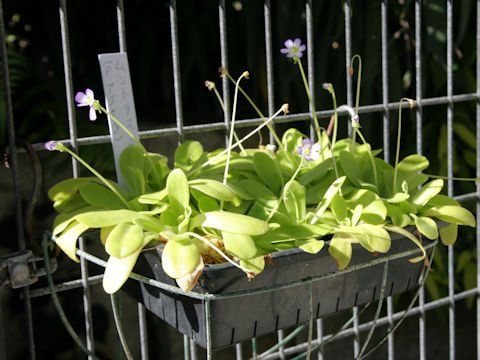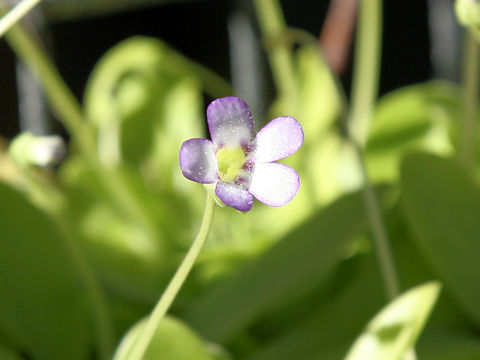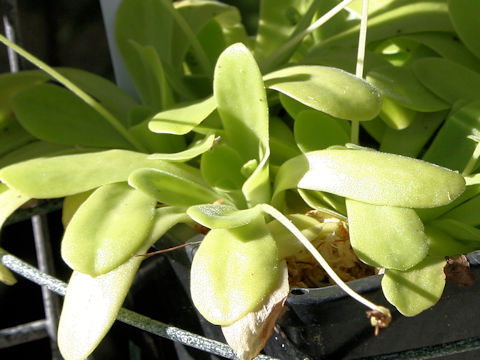
|
The Pinguicula agnata belongs to Lentibulariaceae (the Bladderwort family). It is a perennial herb that is distributed in the northeastern part of Mexico, from Hidalgo to Queretaro and Guanajuato. It grows in dry highland areas and is 10 to 20 cm tall. This climate is characterized by a dry period in winter and a rainy period in summer. During the dry season, it forms smaller, more compact leaves, and most of them do not have glandular hairs. In the rainy season, however, the leaves become longer and narrower, and are covered in glandular hairs. In summer, the leaves are spatulate or ovate-elliptic in shape, and are a dark green, olive green, reddish or reddish brown color, with a dense covering of woolly hair and serrated glandular hairs on the surface. In winter, the leaves are obovate, and are covered in white hairs, and can be green, red or reddish brown. From November to March, it produces white flowers or white-based with light purple or purple edges flowes on its scapes. It is a carnivorous plant that uses the glandular hairs on its leaves to trap unsuspecting prey.
|


